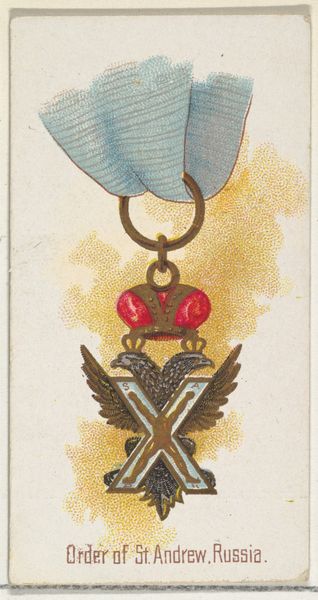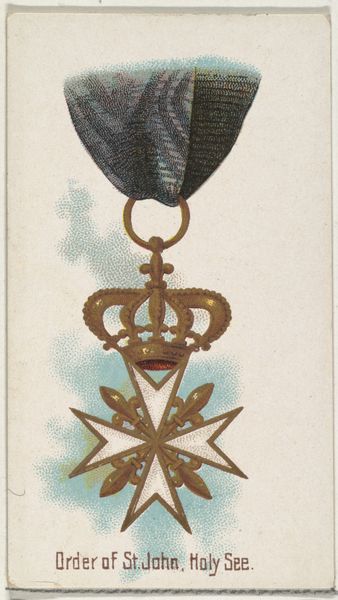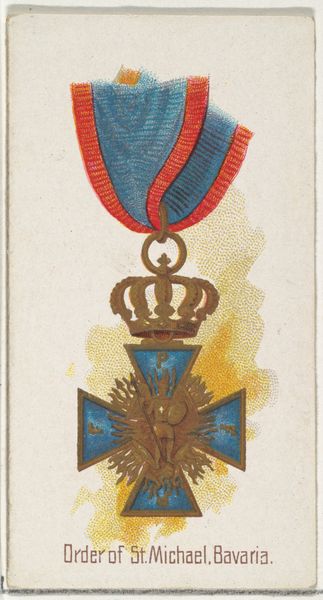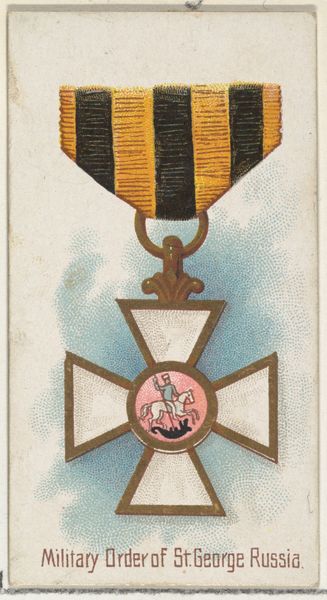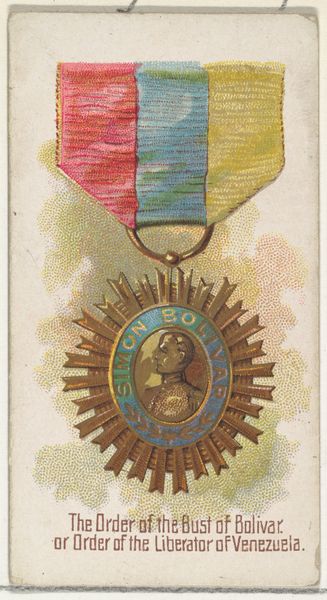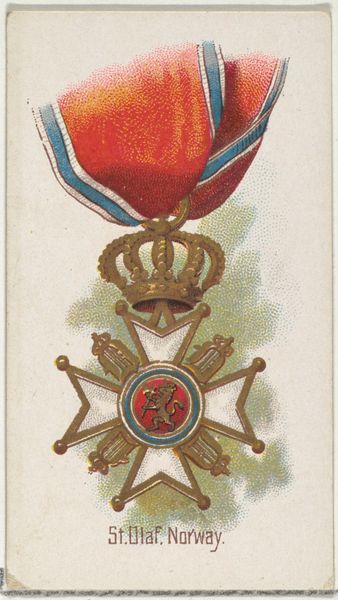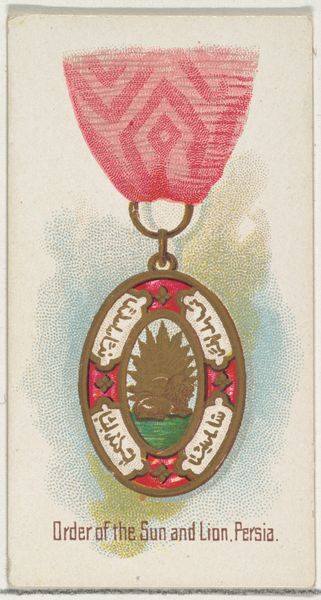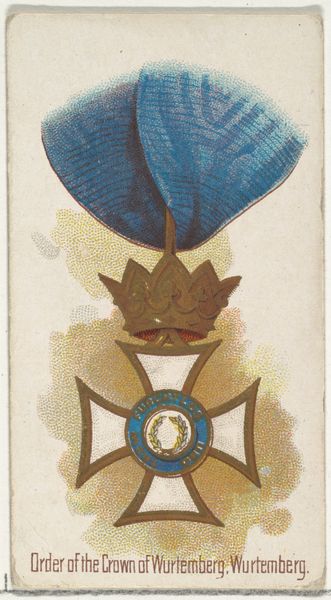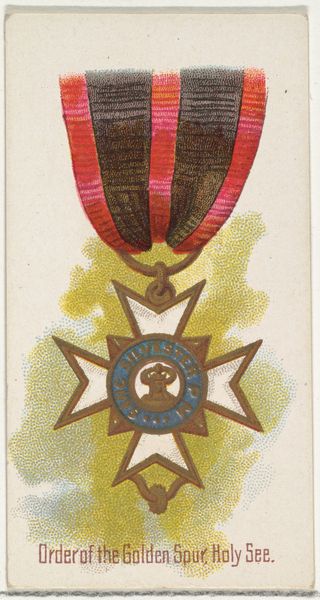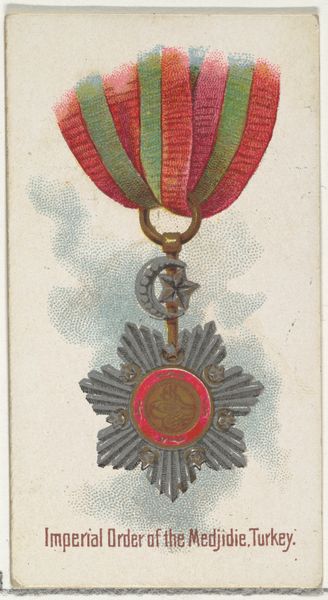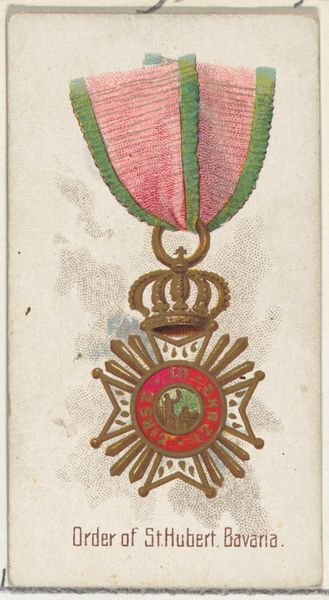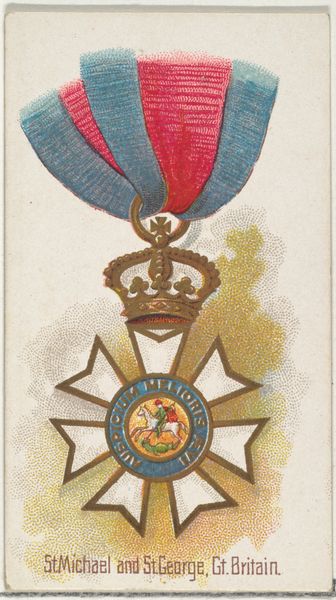
Order of the Iron Crown, Austria, from the World's Decorations series (N30) for Allen & Ginter Cigarettes 1890
0:00
0:00
drawing, print, watercolor
#
medal
#
drawing
# print
#
watercolor
#
symbolism
#
watercolour illustration
#
decorative-art
Dimensions: Sheet: 2 3/4 x 1 1/2 in. (7 x 3.8 cm)
Copyright: Public Domain
Editor: This chromolithograph from 1890 showcases the Order of the Iron Crown, Austria, from the World’s Decorations series by Allen & Ginter. I’m struck by the level of detail, and I find myself thinking about the symbolism of state power during this era. What do you see when you look at this image? Curator: It is more than a pretty picture; this medal serves as a potent symbol of imperial ideology during a time of immense social upheaval and changing power structures. How was this image circulated, and to what audience? This artwork speaks volumes about the relationship between visual culture, national identity, and the construction of authority. Editor: As part of a cigarette card series, this image would have circulated widely amongst the general public, making the imagery of state power commonplace and perhaps even collectible. It almost seems to normalise it. Curator: Precisely. The normalization is key. Consider how the depiction of this medal reinforces hierarchies and legitimizes Austrian rule at a time when socialist movements and calls for national self-determination were gaining momentum. Think about the implied values: loyalty, duty, and imperial strength. In whose interests are these values promoted? Editor: That really gives me a different way to consider what the artist and publisher hoped to communicate – or reinforce. This image served as propaganda on some level. Curator: It's crucial to consider art objects, even something as seemingly innocuous as a cigarette card, as active participants in shaping social consciousness and power relations. Everything signifies something. How do seemingly decorative pieces shape people’s thinking about belonging? About obedience? Editor: This conversation has revealed to me the image's deeper significance in the context of socio-political power structures of the time, something I wouldn't have considered. Curator: Examining art through the lens of social and historical context helps us reveal its intended impact and broader societal influences. Now, how do these symbolic forms still operate today?
Comments
No comments
Be the first to comment and join the conversation on the ultimate creative platform.
